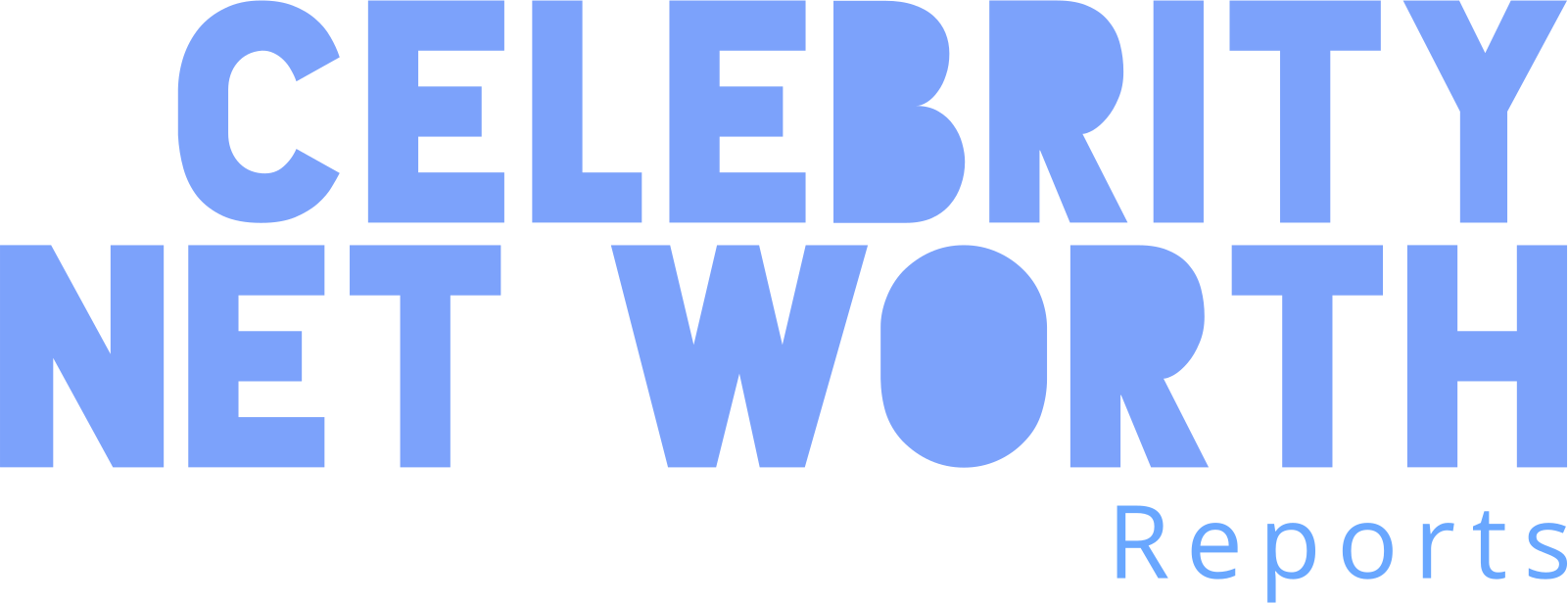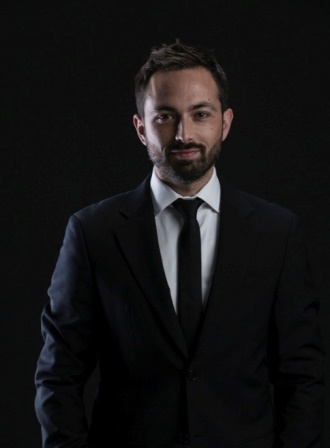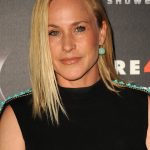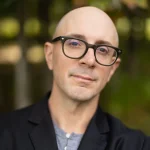Derek Muller: Science Communication Pioneer and Educational YouTube Innovator
Derek Muller has established himself as one of the most influential science communicators of the digital age, transforming complex scientific concepts into compelling content that educates and inspires millions through his YouTube channel Veritasium. With over 14 million subscribers and billions of views, Muller has created a distinctive approach to science communication that combines rigorous accuracy with narrative techniques that make even the most abstract concepts accessible to general audiences.
Early Life and Educational Foundation
Born in Traralgon, Victoria, Australia in 1982, Muller spent his formative years in Vancouver, Canada, where his family relocated when he was two years old. This dual Australian-Canadian upbringing provided him with a global perspective that would later inform his approach to creating science content with international appeal.
From an early age, Muller displayed natural curiosity about how things worked, coupled with a gift for clear explanation that foreshadowed his later career. Former teachers recall his ability to grasp complex concepts quickly and, more significantly, to reformulate them in ways that helped classmates understand—an early indication of his talent for educational communication.
“Even in high school physics, Derek had this unique ability to translate textbook explanations into real-world examples that made sense to everyone,” noted his former science teacher in a 2018 interview. “He wasn’t just bright; he had this intuitive understanding of how to build conceptual bridges for other students.”
This natural inclination toward both science and communication guided Muller’s educational choices. He completed his undergraduate education at Queen’s University in Kingston, Ontario, earning a Bachelor of Science in Engineering Physics. This rigorous program provided the technical foundation that would later enable him to address advanced scientific concepts with confidence and precision.
Rather than pursuing a conventional engineering career, Muller’s interests led him to the intersection of science and education. This focus took him to the University of Sydney in Australia, where he completed a Ph.D. in Physics Education Research—a specialization that directly examined how people learn scientific concepts and what approaches most effectively overcome common misconceptions.
His doctoral research proved particularly significant for his later work, as it focused specifically on misconceptions in physics education and how video could be used to address them effectively. This academic investigation provided the theoretical framework that would later distinguish Veritasium from more conventional science content.
“My research showed that simply telling people the correct information isn’t effective at dispelling misconceptions,” Muller explained in a 2019 interview. “You have to directly address the wrong ideas people already hold, show why they’re appealing but incorrect, and then build toward the right explanation. That insight fundamentally shaped how I approach science communication.”
This research-based approach to science communication—addressing misconceptions directly rather than simply presenting correct information—would become a signature element of Muller’s content strategy, setting his work apart from traditional educational videos and establishing a template that many other science communicators would later adopt.
The Genesis and Evolution of Veritasium
Muller launched Veritasium in 2011, a period when YouTube was transitioning from a platform dominated by amateur videos to one that could support more structured content creation. The channel’s name—a combination of “veritas” (Latin for truth) and the common “-ium” suffix of chemical elements—reflected Muller’s ambition to create content centered on scientific truth.
The early Veritasium videos established patterns that would define the channel’s approach. Rather than presenting science as a collection of facts to be memorized, Muller structured videos around questions, paradoxes, and common misconceptions—creating narrative tension that engaged viewers while addressing fundamental concepts in physics and other sciences.
One of his earliest successful videos exemplified this approach. In “Misconceptions About Falling Objects,” Muller began by interviewing pedestrians about which object would hit the ground first if dropped simultaneously—a heavy ball or a light ball. After documenting the common misconception that heavier objects fall faster, he demonstrated the correct principle with clear experiments, explaining Galileo’s insights and how they challenged Aristotelian physics.
This format—combining street interviews revealing misconceptions, clear demonstrations, historical context, and accessible explanations—became a template for many subsequent videos. The approach reflected Muller’s research findings about effective science communication, engaging viewers by directly addressing the gap between intuitive understanding and scientific reality.
As the channel grew, Muller expanded both the production quality and conceptual scope of his content. From relatively simple demonstrations filmed with basic equipment, Veritasium evolved to include elaborate experiments, international filming locations, sophisticated animations, and collaborations with leading scientific institutions and researchers.
This evolution reflected both growing resources as the channel gained popularity and Muller’s deepening understanding of what would engage viewers while maintaining educational integrity. Unlike many YouTube creators who found a successful formula and repeated it with minimal variation, Muller continuously experimented with different formats and approaches—a reflection of his scientific mindset applied to content creation itself.
Media analysts have noted this experimental approach as key to Veritasium’s sustained growth. “What distinguishes Muller from many science communicators is his willingness to evolve his approach based on audience response and changing platform dynamics,” observed digital media researcher Dr. Alice Chen. “He treats his content strategy with the same experimental mindset he applies to scientific concepts.”
This evolution has included diversification into multiple content formats, including:
- Explanation videos that address specific scientific concepts or phenomena through clear visualizations and analogies
- Experiment videos featuring ambitious real-world demonstrations of scientific principles
- Interview segments with leading researchers discussing cutting-edge developments
- Historical explorations examining how scientific understanding has evolved over time
- Thought experiments that use hypothetical scenarios to explore complex concepts
- Debunking videos that critically examine viral scientific claims or common misconceptions
This diversity of approaches has allowed Veritasium to address an exceptionally wide range of scientific topics while maintaining a consistent core focus on building genuine understanding rather than simply presenting information.
Content Strategy and Educational Approach
What distinguishes Muller’s work from many science communicators is his sophisticated understanding of how people learn scientific concepts—knowledge derived from both his academic research and years of content creation experience. Several principles characterize this approach:
- Addressing Misconceptions Directly: Rather than simply presenting correct information, Muller frequently begins by exploring why incorrect ideas seem intuitively appealing, then systematically demonstrates their limitations before building toward accurate explanations.
- Cognitive Conflict as Engagement Tool: Many Veritasium videos deliberately create moments of cognitive dissonance—presenting situations where intuitive expectations conflict with scientific reality—to create the intellectual tension that drives genuine learning.
- Historical Context: Scientific concepts are frequently presented within their historical development, showing how understanding evolved through observation, experimentation, and theoretical refinement rather than emerging fully formed.
- Visual Demonstration Priority: Complex concepts are consistently made tangible through demonstrations, visualizations, and analogies rather than relying on mathematical formalism alone.
- Precision Without Oversimplification: Unlike many science popularizers who sacrifice accuracy for accessibility, Muller maintains scientific precision while finding ways to make concepts understandable without distortion.
This approach reflects Muller’s understanding of the fundamental challenge in science communication: bridging the gap between specialized knowledge developed over centuries by experts and the intuitive understanding of audiences without extensive scientific background.
“The hardest part of science communication isn’t simplifying concepts—it’s finding the right analogies, demonstrations, and narrative approaches that make complex ideas accessible without distorting them,” Muller explained in his 2021 Royal Institution lecture. “You’re essentially building conceptual bridges between different ways of understanding the world.”
Education researchers have noted the effectiveness of this approach, particularly for topics where intuitive understanding often conflicts with scientific reality. Dr. Martin Shelton, who studies digital science education, observed: “What makes Veritasium content particularly effective is that Muller doesn’t treat misconceptions as simply wrong ideas to be corrected, but as natural starting points for building more sophisticated understanding. This respects the audience’s intelligence while guiding them toward more accurate models.”
This respect for audience intelligence extends to Muller’s willingness to address genuinely complex topics that many science communicators avoid. Videos exploring quantum mechanics, relativity, and other advanced concepts demonstrate his belief that fundamental scientific ideas can be made accessible without sacrificing their essential nature—a philosophy that has attracted a audience seeking substantial intellectual engagement rather than merely entertaining science facts.
Viral Successes and Signature Content
While maintaining consistent educational quality, several Veritasium videos have achieved exceptional viral success, bringing scientific concepts to audiences far beyond those normally engaged with educational content. These breakout videos reveal patterns in what makes complex science broadly appealing when presented effectively.
“World’s Roundest Object,” which has accumulated over 30 million views, exemplifies this appeal. The video explores the scientific meaning of perfect roundness through the silicon spheres created for the kilogram redefinition project. By connecting abstract metrological precision to tangible objects viewers can see and understand, Muller made a highly specialized scientific endeavor broadly accessible without sacrificing its intellectual substance.
Similarly, “Why Are 96,000,000 Black Balls on This Reservoir?” leveraged visual intrigue—the striking image of millions of black plastic balls covering a Los Angeles reservoir—to explore multiple scientific concepts including water quality, evaporation, and public infrastructure. The video’s 85+ million views demonstrated how starting with visually compelling phenomena can draw viewers into substantive scientific explanations.
Some of Veritasium’s most significant content has directly challenged widely held misconceptions, even among scientifically literate audiences. “Hydrodynamic Levitation” and “The Misconception About Electricity” both addressed fundamental physics concepts that are frequently misunderstood even in educational settings, generating both viral attention and substantive discussion within scientific and educational communities.
These viral successes share several characteristics that demonstrate Muller’s understanding of both educational effectiveness and audience engagement:
- Visual Impact: Each presents striking visuals that create immediate viewer interest before deeper explanation begins
- Surprising Revelations: Content often contains genuine surprises that challenge viewer expectations, creating the cognitive engagement that drives both sharing behavior and learning
- Practical Relevance: Abstract concepts are consistently connected to real-world applications or phenomena observers might encounter
- Narrative Structure: Information is presented through cohesive storytelling rather than as disconnected facts, creating the narrative tension that maintains viewer attention through complex explanations
This combination of educational substance with engaging presentation has allowed Veritasium to achieve what few educational channels manage: content that spreads virally without sacrificing intellectual integrity, bringing sophisticated scientific concepts to audiences who might never seek out conventional educational material.
Institutional Collaborations and Broader Impact
As Veritasium’s reputation and audience grew, Muller developed collaborations with major scientific institutions that extended his impact beyond independent YouTube content. These partnerships have included work with NASA, the Australian Broadcasting Corporation (ABC), Google, Bill Gates’ educational initiatives, and various research universities.
These collaborations have taken multiple forms, from specially commissioned explanatory videos about institutional research to documentary projects that leverage Muller’s communication skills to reach broader audiences. Notable examples include his work with NASA’s Jet Propulsion Laboratory explaining Mars rover technology and collaboration with Google on quantum computing explanations.
The 2013 documentary series “Uranium: Twisting the Dragon’s Tail,” which Muller hosted for PBS and the ABC, demonstrated his ability to translate his digital communication approach to long-form broadcasting. The three-part series explored the science, history, and implications of uranium, from its discovery through its applications in both weapons and energy, earning critical acclaim for making complex nuclear science accessible without oversimplification.
These institutional partnerships reflect recognition of Muller’s unique capabilities in translating specialized scientific knowledge for general audiences—a skill increasingly valued as research organizations face greater pressure to demonstrate public value and impact. His ability to maintain scientific accuracy while creating genuinely engaging content has made him a valuable partner for organizations seeking to communicate complex work effectively.
Beyond specific content collaborations, Muller has influenced how institutions approach their own science communication efforts. His success has provided a model for research organizations developing digital outreach strategies, demonstrating the potential of narrative-driven, misconception-addressing approaches compared to more traditional institutional communication styles.
“Derek showed that you could create rigorous scientific content that doesn’t talk down to audiences and still reaches millions of viewers,” noted Dr. Katherine Morrison, director of communications at a major research university. “That’s transformed how many scientific institutions think about public engagement—moving from an information transmission model to one focused on addressing misconceptions and building genuine understanding.”
Teaching Philosophy and Educational Impact
While Muller’s most visible impact comes through his content creation, his background as an education researcher continues to influence broader discussions about how science should be taught in both formal and informal settings. His 2014 TED talk, “The Myth of the Educated Citizen,” articulated a vision of science education focused on conceptual understanding and critical thinking rather than fact memorization—a perspective informed by both his research and content creation experience.
This educational philosophy emphasizes several principles that challenge conventional approaches:
- Misconception-Based Learning: Effective education must begin by identifying and directly addressing existing misconceptions rather than simply presenting correct information
- Demonstration Over Declaration: Abstract concepts should be made concrete through demonstrations that allow learners to observe scientific principles in action
- Historical Development: Understanding how scientific knowledge evolved provides context that helps learners grasp why certain ideas prevailed over others
- Questioning as Primary Tool: Scientific literacy develops through questioning assumptions and predictions rather than passive reception of established facts
These principles, consistently applied throughout Veritasium content, have influenced educational approaches well beyond YouTube. Educators at various levels report incorporating Veritasium videos and methodologies into their teaching, using Muller’s content not just as supplementary material but as models for restructuring how scientific concepts are presented.
“Derek’s videos don’t just explain concepts clearly—they demonstrate a teaching methodology that many of us now try to incorporate into our classroom approach,” explained high school physics teacher Martin Chen. “The way he addresses misconceptions head-on and creates moments of cognitive conflict has fundamentally changed how I structure my lessons.”
This classroom influence extends to higher education, where Veritasium content is frequently incorporated into university courses as both supplementary material and examples of effective science communication. Several universities now offer courses specifically analyzing digital science communication that feature Muller’s work as case studies in effective educational content creation.
Beyond formal education, Veritasium has contributed to what education researchers call “free-choice learning”—self-directed educational engagement outside institutional settings. By creating content that people actively choose to watch and share, Muller has helped develop models for science engagement that reach audiences who might never opt into conventional science education.
“What’s particularly significant about Derek’s impact is that he’s reaching people who wouldn’t sign up for a physics class but will happily spend 15 minutes watching a video about quantum mechanics if it’s presented as an intriguing puzzle rather than a lecture,” observed informal science education researcher Dr. Elena Cordoba. “That’s expanding science literacy among demographics that traditional science education often fails to engage.”
Personal Approach and Communication Style
Muller’s on-camera presence is characterized by a distinctive combination of enthusiasm and thoughtfulness that distinguishes him from many science communicators. Unlike presenters who adopt either overtly theatrical personas or dry academic approaches, he has developed a communication style that balances infectious curiosity with intellectual rigor.
Several elements define this approach:
- Calibrated Enthusiasm: Muller demonstrates genuine excitement about scientific concepts without the exaggerated reactions common in some educational content, creating authenticity that resonates with viewers seeking substantial engagement
- Deliberate Pacing: Explanations are given time to develop fully, with complex concepts broken into digestible segments without rushing to maintain artificial engagement
- Conversational Tone: Technical information is presented in natural language that maintains precision without unnecessary jargon, creating the feeling of a knowledgeable friend explaining concepts rather than a distant authority lecturing
- Visible Thinking Process: Muller often walks viewers through his own reasoning about problems, modeling the analytical thinking that scientists apply rather than simply presenting conclusions
- Comfort with Complexity: Unlike communicators who avoid nuance for fear of losing audience attention, Muller explicitly acknowledges scientific complexities and uncertainties, building viewer trust through intellectual honesty
This communication approach reflects Muller’s understanding that effective science education requires building relationships with viewers based on both intellectual respect and personal connection. By positioning himself as a curious guide rather than an omniscient authority, he creates space for viewers to engage actively with concepts rather than passively receiving information.
Media trainer Dr. Samantha Reynolds has noted the effectiveness of this approach: “What makes Derek so effective is that he never makes viewers feel inadequate for not already understanding something. He creates this sense that you’re exploring ideas together, which is much more conducive to actual learning than the ‘expert explains to novice’ dynamic many science communicators default to.”
This relational approach extends to how Muller handles feedback and corrections. Unlike many content creators who either ignore corrections or make defensive responses, he has established a pattern of transparent acknowledgment when errors occur or when new information requires updating previous explanations—a practice that reinforces the scientific values of evidence-based thinking and willingness to revise understanding based on new information.
Business Development and Content Evolution
Beyond his educational impact, Muller has developed Veritasium into a sustainable business operation that supports increasingly ambitious content creation while maintaining editorial independence. This business evolution reflects sophisticated understanding of digital media economics and content strategy that complements his scientific expertise.
Unlike many YouTube creators who rely exclusively on platform advertising revenue—a notoriously volatile income source—Muller has developed a diversified business model that includes:
- Multiple Revenue Streams: Combining YouTube advertising, sponsored content, speaking engagements, broadcast collaborations, and merchandise
- Strategic Partnerships: Developing relationships with scientific institutions and educational organizations that provide both content resources and financial support
- Production Team Building: Expanding from solo creation to a small production team that enables more ambitious projects while maintaining consistent quality
- Intellectual Property Development: Creating content with enduring educational value rather than chasing temporary trends, building a library of material with long-term utility
This business approach has allowed Veritasium to evolve from simple demonstrations filmed with basic equipment to ambitious projects requiring significant production resources—including international filming, elaborate experimental setups, and sophisticated visual effects that make abstract concepts tangible.
Notable examples of this production evolution include videos like “How Was Video Invented?” which combined historical recreation, international location filming, and technical demonstrations to explore the development of electronic imaging technology. Similarly, “The Longest-Running Evolution Experiment” featured access to a 30+ year scientific study at Michigan State University, demonstrating Muller’s ability to secure participation from significant research projects for educational content.
Media business analyst Maria Chen has noted the significance of this sustainable development model: “What distinguishes Veritasium’s business approach is that it’s built around content with enduring value rather than chasing algorithms or trends. By creating material people still watch years after publication, Muller has built a content library that generates consistent viewership while newer videos build audience—a much more sustainable model than creators dependent on constant novelty.”
This business sustainability has allowed for content experimentation that might otherwise be prohibitively risky, including videos addressing niche scientific topics unlikely to generate massive viewership but valuable for comprehensive science education. By balancing more broadly appealing content with more specialized material, Veritasium maintains both audience growth and educational integrity.
Cultural Impact and Science Literacy Contributions
Beyond specific educational outcomes, Muller’s work has contributed to broader cultural shifts in how science is perceived and engaged with by general audiences. By demonstrating that complex scientific concepts can be both intellectually rigorous and genuinely entertaining, Veritasium has helped challenge the false dichotomy between educational value and engagement that has often limited science communication impact.
Science communication researchers have noted several dimensions of this cultural impact:
- Normalizing Intellectual Curiosity: Veritasium’s success demonstrates substantial public appetite for content that engages deeper thinking rather than merely presenting simplified facts or sensationalized phenomena
- Reframing Scientific Understanding: By consistently showing how scientific knowledge develops through questioning, testing, and revising rather than through authority pronouncements, Muller’s content helps viewers develop more accurate understanding of how science actually works
- Bridging Specialist-Public Divides: By translating cutting-edge research into accessible explanations without sacrificing accuracy, Veritasium helps reduce the knowledge gap between specialized scientific communities and interested general audiences
- Modeling Evidence-Based Thinking: Through his analytical approach to both scientific concepts and popular claims, Muller demonstrates critical thinking processes that viewers can apply beyond specific scientific topics
These contributions address what many science education researchers consider the most significant challenge in contemporary science literacy: developing not just factual knowledge but understanding of scientific processes and thinking patterns that citizens can apply to evaluate claims in their daily lives.
“The most valuable aspect of Derek’s work isn’t teaching specific scientific facts—it’s modeling how to think about claims and evidence,” noted science education researcher Dr. Michael Faraday. “In an era of information overload where distinguishing reliable knowledge from misinformation is increasingly challenging, that contribution to public critical thinking capacity is profoundly important.”
This modeling of evidence-based thinking extends to how Veritasium handles scientific controversies and developing research. Rather than presenting science as a body of settled facts, Muller frequently acknowledges areas of ongoing research, competing theories, and limitations in current understanding—demonstrating the provisional nature of scientific knowledge without undermining confidence in established findings.
Personal Life and Background Influence
While maintaining appropriate boundaries between his public work and private life, Muller has shared how his personal background influences his approach to science communication. His experience growing up between Australia and Canada provided perspective on how scientific concepts are taught in different educational systems, informing his understanding of common misconceptions and effective teaching approaches.
His multicultural background also contributed to communication skills that serve his educational work—particularly his ability to recognize when specialized terminology might create barriers for audiences with different backgrounds. This sensitivity to how language and cultural context affect understanding has proven valuable in creating content with international appeal.
Muller has spoken about how becoming a parent has influenced his perspective on educational communication, noting increased appreciation for how curiosity develops and how explanation approaches need to adapt to different developmental stages. This personal experience complements his academic understanding of learning processes, informing content that addresses different levels of prior knowledge.
Beyond these influences, colleagues note that Muller’s communication effectiveness stems partly from personal qualities that don’t appear on academic credentials—particularly his genuine interest in how people understand concepts and his patience in developing explanations that bridge conceptual gaps.
“What makes Derek exceptional isn’t just his scientific knowledge or communication skills, but his genuine interest in how other people think,” observed a longtime collaborator. “He’s consistently curious about misconceptions—not to correct them condescendingly, but because he’s genuinely interested in the mental models people build and how they can be refined toward more accurate understanding.”
This authentic interest in others’ thinking processes creates the foundation for communication that feels like collaborative exploration rather than authoritative pronouncement—a quality that distinguishes Veritasium content from more hierarchical approaches to science education.
Future Directions and Evolving Impact
As Muller continues developing Veritasium and his broader science communication work, several emerging directions suggest potential evolution in his impact:
- Format Expansion: Recent projects indicate interest in longer-form documentary approaches that allow deeper exploration of complex topics, potentially expanding from YouTube’s format constraints to other distribution channels
- Educational System Influence: Increasing engagement with formal education systems suggests potential to influence how science is taught in institutional settings, applying insights from his content creation to traditional educational contexts
- Interdisciplinary Exploration: Recent content has expanded beyond physics to address broader scientific questions involving biology, computer science, and other fields, suggesting growing interest in interdisciplinary connections
- Methodological Influence: As digital science communication continues developing as a field, Muller’s research-based approach provides methodological frameworks that may influence how new science communicators develop their content strategies
- Global Science Literacy: International viewership growth creates opportunities to address how scientific concepts are understood across cultural contexts, potentially developing approaches that address misconceptions specific to different educational systems
What distinguishes Muller’s potential future impact from many content creators is the substantial foundation beneath his public work—combining research-based understanding of how people learn, technical knowledge of scientific concepts, and practical experience in what communication approaches prove effective across diverse audiences.
Education researcher Dr. James Morton observed: “What makes Derek’s contribution particularly significant is that he’s continuously building on both research and practical experience to refine how complex concepts can be communicated effectively. He’s not just creating individual explanations but developing communication methodologies that could influence how science is taught far beyond his specific content.”
This methodological development suggests that Muller’s most enduring contribution may ultimately be not just the specific scientific concepts he’s explained but the approaches he’s developed for making complex ideas accessible without sacrificing their essential nature—techniques that could influence science communication practice long after particular videos have been superseded by new scientific developments.
Legacy and Broader Significance
While still in the midst of an active career, Muller has already established a distinctive legacy in science communication through his integration of educational research, scientific precision, and digital media innovation. This legacy encompasses several dimensions:
- Methodological Innovation: Developing research-based approaches to addressing misconceptions that have influenced how digital science communication is practiced across platforms
- Content Library Creation: Building an educational resource collection with enduring value, providing accessible explanations of fundamental scientific concepts that remain relevant despite rapidly evolving digital media landscapes
- Audience Development: Demonstrating that substantial audiences exist for intellectually rigorous science content when presented through effective communication strategies, challenging assumptions about necessary simplification in science popularization
- Professional Pathway Creation: Establishing viable models for independent science communication careers that maintain both intellectual integrity and financial sustainability, creating templates for subsequent communicators
- Cross-Platform Translation: Successfully adapting digital communication approaches to traditional broadcast contexts, developing techniques that work across media environments
Perhaps most significantly, Muller has helped establish science communication as a distinctive professional practice requiring specialized skills beyond either scientific expertise or general media production—a field requiring understanding of both scientific concepts and how people engage with and learn from different communication approaches.
“Derek’s work exemplifies how effective science communication requires this dual expertise,” noted science communication researcher Dr. Emma Weitman. “You need both deep understanding of the scientific concepts themselves and sophisticated knowledge of how people learn, what misconceptions they bring, and what communication approaches actually change understanding rather than just transmitting information.”
This recognition of science communication as a specialized field requiring its own expertise has contributed to institutional developments including university programs specifically focused on science communication, research centers studying effective approaches, and specialized roles within scientific organizations dedicated to public engagement.
By demonstrating both the societal value and commercial viability of rigorous science communication, Muller has helped establish infrastructure supporting expanded science literacy efforts—creating pathways for subsequent communicators to build careers around making complex ideas accessible without sacrificing their essential nature.
For audiences discovering science through his content, Muller offers something increasingly valuable in contemporary information environments: explanations that respect both scientific accuracy and viewer intelligence while making complex ideas genuinely accessible. This balanced approach—neither oversimplifying for popularity nor hiding behind unnecessary complexity—provides a model for how specialized knowledge of all kinds can be effectively shared across the expert-public divide that often limits the impact of important ideas.
